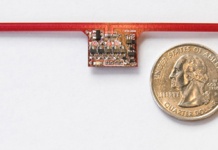 After posting a piece on how the memory effective of mobile device batteries was … well, just a memory of tech gone by, I may have to eat my words. Research in Advanced Science, “Quantifying Bulk Electrode Strain and Material Displacement within Lithium Batteries via High-Speed Operando Tomography and Digital Volume Correlation,” just published under a Creative Commons Attribution License, has used x-rays to show lithium-ion batteries physically degrading in real time during usage and recharging cycles.
After posting a piece on how the memory effective of mobile device batteries was … well, just a memory of tech gone by, I may have to eat my words. Research in Advanced Science, “Quantifying Bulk Electrode Strain and Material Displacement within Lithium Batteries via High-Speed Operando Tomography and Digital Volume Correlation,” just published under a Creative Commons Attribution License, has used x-rays to show lithium-ion batteries physically degrading in real time during usage and recharging cycles.
The researchers, aiming “to identify causes of performance loss within commercial lithium batteries,” captured “real-time electrode material displacement” in “a commercial Li/MnO2 primary battery during discharge,” including “displacement of the rigid current collector and cell materials,” and the formation of cracks. You can see the video of the still image above here, and other almost as impressive ones in the actual article.
The researchers hope that their results can “guide the optimization of material use and commercial cell designs.” Meantime, though, there seems little doubt that battery performance degradation over time, whether or not to the extent of the notorious memory effect, is a reality, and is going to impact your mobile device use for quite some time to come.


































The importance is the difference in how you treat batteries. To combat memory effect (a phenomenon of NiCd batteries), best practice was to alwasy fully discharge and re-charge your batteries at every cycle. Conversely, that’s probably the worst thing you can do to Lion batteries. (best practice, as far as I know, discharge to about 40-50%, recharge to approx 90%. No need to be religious about it, but try to avoid full discharge, and don’t keep it topped up 100% *all* the time, especially when hot.)